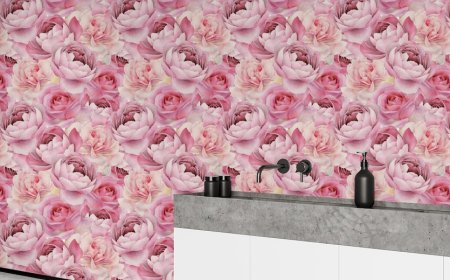What Is The Importance Of White Space In Design?
White space enhances visual appeal, guides user focus, and improves overall readability and usability in design layouts.

White space in design, also known as negative space, refers to the empty or unused areas between elements in a layout. It plays a crucial role in creating balance, enhancing readability, and directing the viewers attention. Whether it's a webpage, advertisement, logo, or illustration, the use of white space can dramatically change how a viewer interprets and interacts with a design. Join Graphic Design Courses in Chennai to master the art of layout, spacing, and composition with expert guidance and hands-on training.
Understanding White Space: The Basics
Before diving deeper, lets first understand the definition of white space in art and design. Contrary to what the term might suggest, white space doesnt have to be white; it refers to any empty or unmarked space in a design. Also known as negative space, it refers to the area between design features, such as text, images, graphics, and margins.
In the context of white space in art, it helps create a visual pause, giving elements room to breathe and the viewer space to think. It enhances the overall composition, making it more digestible and engaging.
FITA Academy offers UI UX Designer Course in Chennai to help you gain real-world design skills with hands-on training and placement support.
Types of White Space in Graphic Design
There are two primary types of white space in graphic design:
-
Macro White Space: This refers to the larger gaps between major design components, such as columns, margins, and content blocks.
-
Micro White Space: These are smaller spaces, such as the spacing between letters, lines of text, or the gaps between buttons.
Understanding the 5-step graphic design process is helpful for students starting a career in design.
Why White Space Matters in Graphic Design
Using white space in design is not about leaving areas blank; it's about providing balance, focus, and clarity. Here are several reasons why white space is crucial in graphic design:
-
Improves Readability: Adequate spacing between lines and paragraphs makes text easier to read and understand.
-
Enhances Focus: It directs attention to key elements by eliminating clutter and distractions, allowing for a more precise and more focused view.
-
Creates Visual Hierarchy: White space helps prioritise information, guiding the viewers eye in a logical order.
-
Adds Elegance and Simplicity: Minimalist designs often rely on white space to achieve a clean, modern look.
Enroll in Mobile App Development Courses in Chennai to build expertise in app design, development, and UI/UX with expert training and job support.
The Role of White Space in Art and Creativity
In fine art, white space in art often serves as a powerful tool to communicate emotion, movement, or emphasis. For example, Japanese and Chinese ink paintings masterfully use negative space to evoke depth and contemplation. In Western art, minimalist compositions utilise white space to create a profound emotional impact.
In both graphic and fine arts, white space allows the viewer's imagination to fill in the gaps, enabling them to complete the picture. It gives breathing room to the subject, making the composition feel less crowded and more thoughtful. This technique reflects a high level of design maturity and creative intent.
White Space in Web and UI/UX Design
In todays digital world, white space in design plays a vital role in user interface (UI) and user experience (UX) design. Websites, apps, and dashboards benefit from well-distributed white space, which:
-
Increases user engagement by reducing cognitive overload
-
Enhances accessibility for all types of users
-
Improves content structure for more straightforward navigation
-
Boosts visual appeal and brand perception
Explore the Best Training Institute in Chennai to gain industry-focused skills, hands-on experience, expert mentorship, and assured placement support.
Common Misconceptions About White Space
Many beginners assume that white space is wasted space or blank area that should be filled. On the contrary, poor use of white space often leads to cluttered and confusing layouts. Remember, white space in graphic design is intentional and purposeful. It isnt about the absence of design but the presence of intelligent design.
The importance of white space in design goes far beyond visual appeal; it directly impacts how users read, interpret, and interact with content. Whether you're working on a branding project, mobile app, website, or artwork, leveraging white space in graphic design adds clarity, sophistication, and focus to your work.
Read more: How to start a Graphic Design Career


































